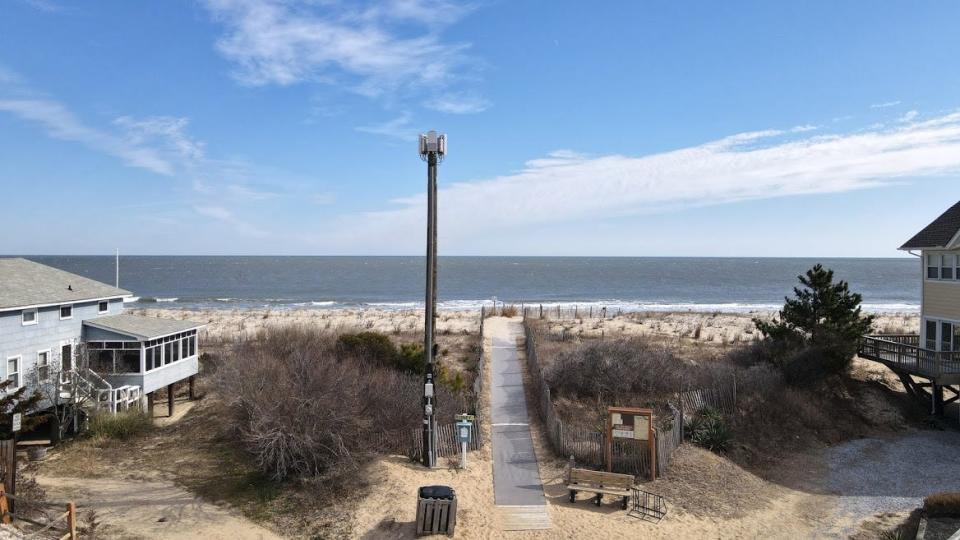Got bad internet service in Delaware? Here's how to make your voice heard, where to do it
Do you live near an area with a spotty internet connection? Now is the chance to make your voice heard.
With hundreds of millions of dollars at its disposal, Delaware is in the process of deploying high-speed broadband internet access to every household in the state.
The Delaware Broadband Office is seeking public comments and feedback on its updated proposal − a 97-page document that covers everything from workforce development to climate change risks. Specifically, input is sought on what needs and barriers exist across the state.

Comments can be sent via email to broadband.comments@delaware.gov by 11:59 p.m. ET on Nov. 13, 2023.
Closing the 'digital divide'
Around 96% of Delawareans have access to high-speed internet, according to the Delaware Broadband Office, leaving an estimated 30,000 individuals and businesses without access to high-speed wired connection or wireless connection.
More than 11,600 homes and businesses have been identified as requiring internet service, and around half are already being attended to by internet providers like Comcast, Verizon and Mediacom.

Delaware is expected to receive over $100 million from the Bipartisan Infrastructure Law to connect every Delawarean to internet service. The proposal to access these funds needs to be approved by the National Telecommunications and Information Administration.
More: Plans announced to fix cell service dead zones in Hockessin and Middletown areas
An additional $12 million from the Bipartisan Infrastructure Law was also granted to the state for the Digital Equity Project, with the focus on engaging and providing underserved communities with access to technology devices.
Maryland communications company Talkie was also awarded $13 million in federal funding in 2020 to achieve the goal of connecting Delawareans to high-speed internet by 2028.
The Affordable Connectivity Program was heavily pushed earlier this year by government officials. With federal funds, the program allows qualifying households to receive internet for up to $30 off per month, in addition to a one-time payment of $100 for a laptop, tablet or computer device.
For more information and to see the qualifying standards, visit the program’s website.
Where are resources going?
Roddy Flynn, executive director at the Delaware Broadband Office, explained that the cost of coverage and the lack of accurate data have been the biggest hurdles, making the surplus of federal funds all the more important to use as accurately as possible.
"It's important for us to get it right," Flynn said. "I don't think we'll be getting another $107 million from the federal government anytime soon. It is essential to get the maps right."
Focus on deploying broadband internet access has been a goal not just in "dead zones" around the state, but also among underserved communities such as seniors, low-income households, or disabled individuals who may face barriers to internet access.
Updates on the progress and funding details can be tracked using this local map. Over 14,000 homes and businesses are in the broadband implementation process, according to the resource, mostly located toward southern Kent and Sussex Counties.
Individuals can also self-report a lack of internet access using this virtual National Broadband Map.
How to make your voice heard
The Delaware Broadband Office has published six different surveys relating to the state's broadband strategy that different businesses, agencies and individuals can use to report progress or the need for assistance.
Employees at schools, libraries, and community centers can update progress or report a lack of access using this survey.
Individuals and organizations who are working on closing the digital divide can report their progress using this survey.
Individuals who have historically faced barriers to accessing the internet, like veterans, English learners and low-income households can fill out this survey to inform officials how these can be rectified in future plans.
People who are either working or interested in workforce development in the telecommunications field can fill out this survey.
Local and state governments can fill out this survey to update the office on the work that is being done and the need that has been shown in certain communities.
There’s also a survey for internet service providers who either already service or are interested in servicing Delaware.
Contact Molly McVety at mmcvety@delawareonline.com. Follow her on Twitter @mollymcvety.
This article originally appeared on Delaware News Journal: Delaware internet access efforts seek public input on bad connections

